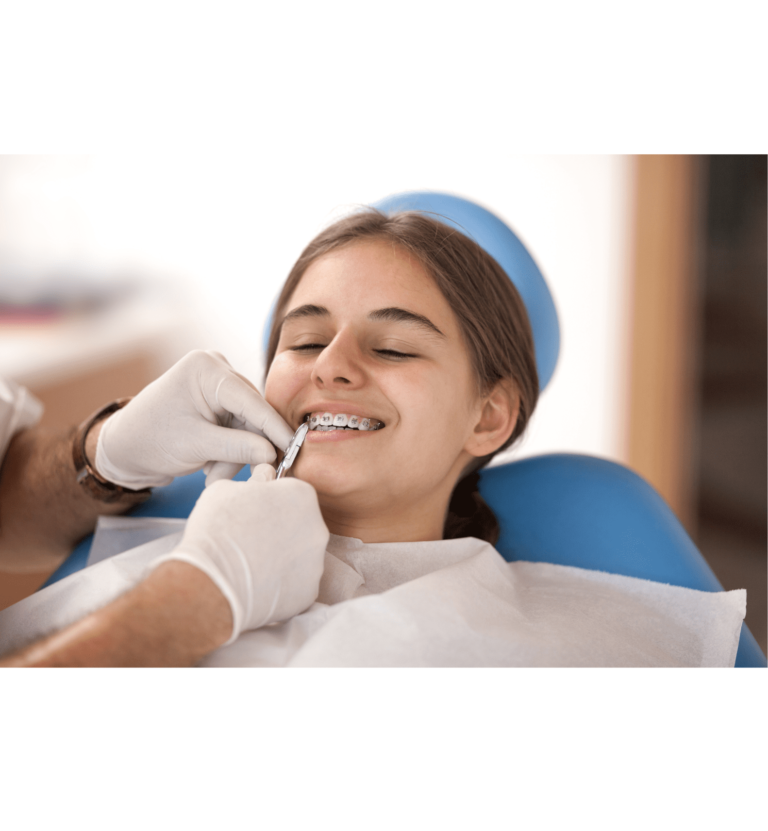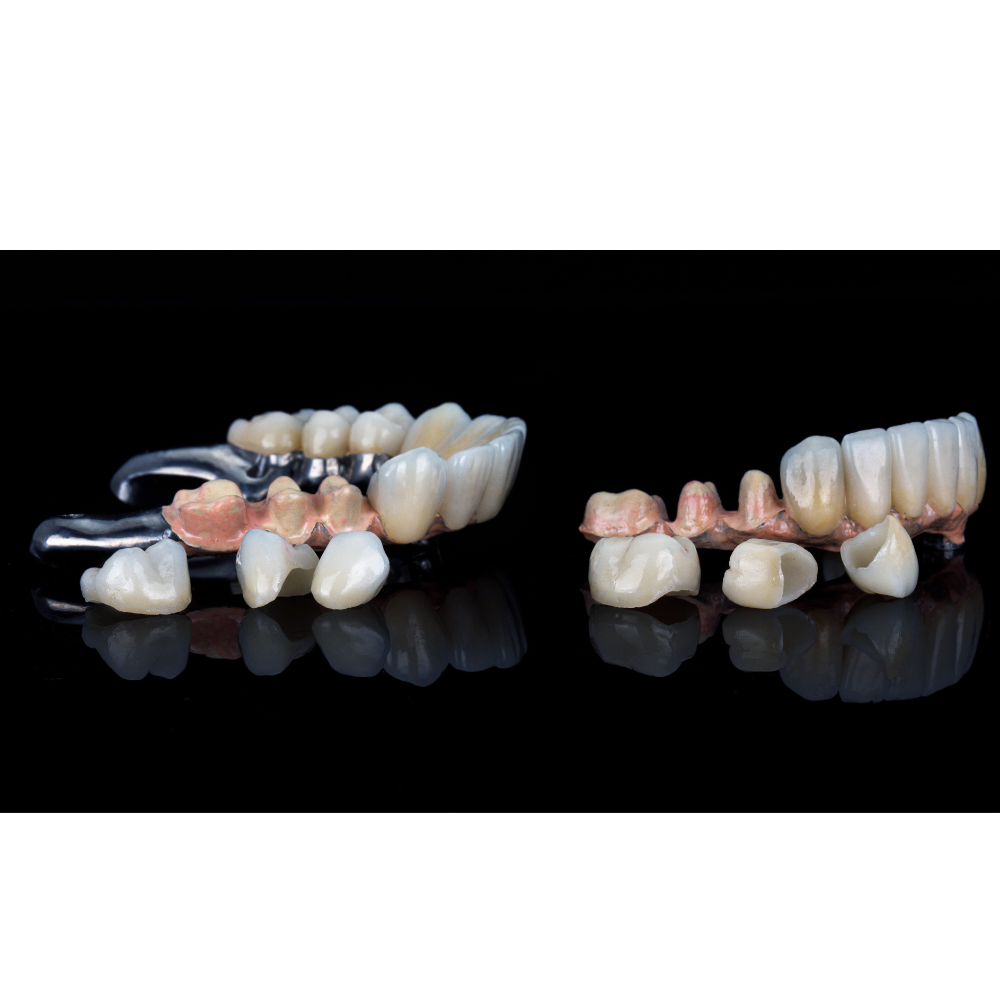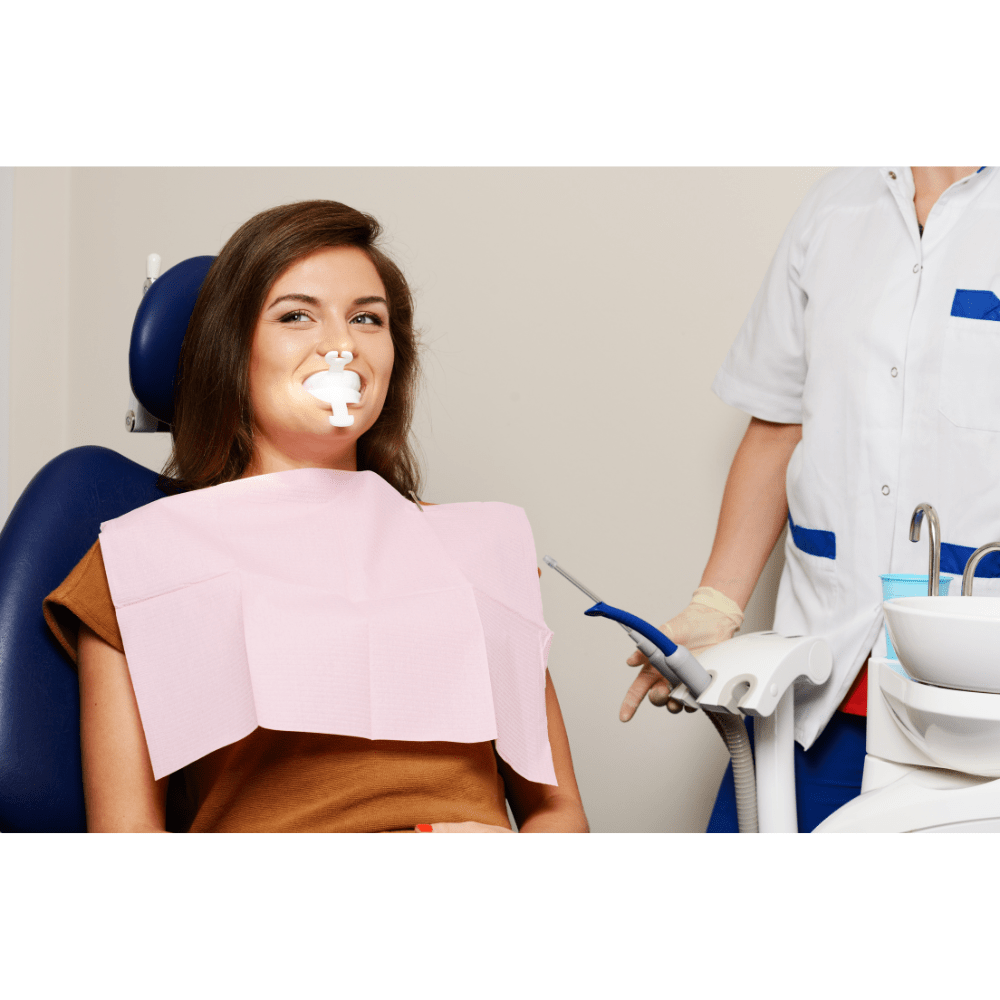What is Braces Bonding? | Procedure, Benefits, And All
Orthodontic treatments are often required to achieve a perfect smile, and braces are one of the most common methods. Central to this process is brace bonding. The science of braces bonding can shed light on how orthodontists help patients achieve healthier and straighter smiles.
This procedure is designed to be both effective and efficient with numerous benefits contributing to the overall success of the treatment. Let’s talk about the braces bonding procedure, its benefits, and caring tips after implementation. Let’s begin with what brace bonding is.
What is Braces Bonding?
Braces bonding is a transformative dental procedure that involves the application of a tooth-colored composite resin material to repair or improve the appearance of teeth affected by chips, cracks, discoloration, or gaps.
It’s commonly used for cosmetic purposes, such as filling cavities in front teeth or reshaping teeth to enhance their aesthetics. Bonding for braces is a versatile procedure that can be completed in a single visit to the dentist’s office. It offers a relatively quick and cost-effective solution for enhancing smiles.
Braces Bonding Procedure
Here’s a step-by-step process of the braces bonding procedure:
I.Etching the Teeth:
The orthodontist applies a special etching solution to the surface of the teeth. This solution roughens the enamel and creates a textured surface for better adhesion of the bonding material.
II.Bonding for Braces:
Next, your dental specialist applies a bonding agent to the prepared tooth surfaces. This bonding agent acts as a glue to adhere the brackets securely to the teeth.
III.Placement of Brackets:
They will carefully position each bracket onto the surface of the teeth according to the predetermined treatment plan. The brackets are made of metal, ceramic, or plastic and come in various shapes and sizes.
IV.Attachment of Archwires:
Once the brackets are in place, a special light or chemical is used to cure or harden the bonding agent, securing the brackets firmly to the teeth.
After the brackets are bonded, the orthodontist inserts archwires into the brackets. These archwires are responsible for applying gentle pressure to the teeth that gradually guides them into the desired position.
V.Braces Removal:
Once the desired alignment is achieved, the braces are removed, and a retainer may be prescribed to maintain the new position of the teeth.
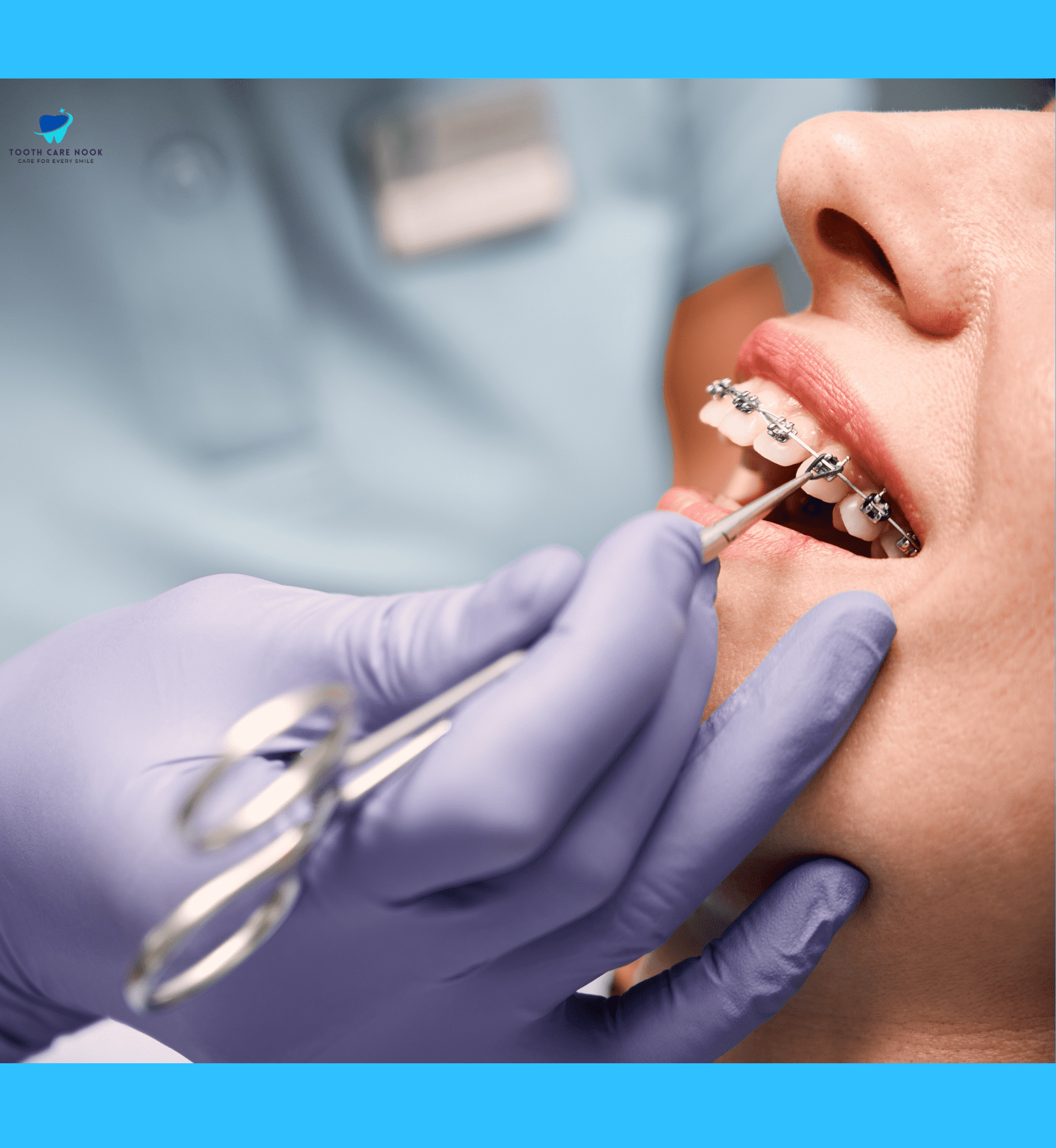
What Are the Types of Bonding in Orthodontics?
There are two main types of bonding in orthodontics.
Direct Bonding:
Direct bonding is the most common type of bonding for braces used in orthodontics. It involves the direct application of adhesive to the surface of the tooth, followed by the placement of brackets or attachments.
The dentist carefully positions each bracket on the tooth surface according to the patient’s treatment plan ensuring precise alignment and optimal tooth movement. Direct bonding allows for greater control and customization of bracket placement which results in more predictable treatment outcomes.
Indirect Bonding:
Indirect bonding is an alternative braces bonding technique that involves creating custom-fabricated trays or templates to position orthodontic brackets accurately. These trays are fabricated based on digital or physical models of the patient’s teeth which allows for precise bracket placement.
During the indirect bonding in orthodontics, the dentist fills the trays with adhesive and then seats them onto the teeth which transfers the brackets onto the tooth surfaces. Indirect bonding can save time during the initial bonding appointment and may result in more efficient bracket placement, particularly in cases of complex malocclusions.
What Do Bonding Brackets Mean?
Bonding brackets is a procedure specific to orthodontics, where small brackets are attached to the surface of teeth using a dental adhesive. These brackets serve as anchor points for orthodontic appliances like braces or aligners that facilitate the gradual movement and alignment of teeth.
It is a main step in treatment that enables dentists to apply controlled forces to guide tooth movement and correct alignment issues over time. Bonding brackets requires careful planning and precision placement of the brackets by specialists.
Caring Tips for Bonding Teeth
You should practice the following caring tips for maintaining bonded teeth:
- Brush your teeth at least twice a day with fluoride toothpaste and floss daily to remove plaque and food particles.
- Overcome consumption of foods and beverages known to cause staining, such as coffee, tea, red wine, and dark-colored sauces.
- Limit consumption of acidic beverages like soda and citrus juices to protect bonded teeth from erosion.
- Wear a mouthguard to protect bonded teeth from trauma or damage if you participate in contact sports or grind your teeth at night.
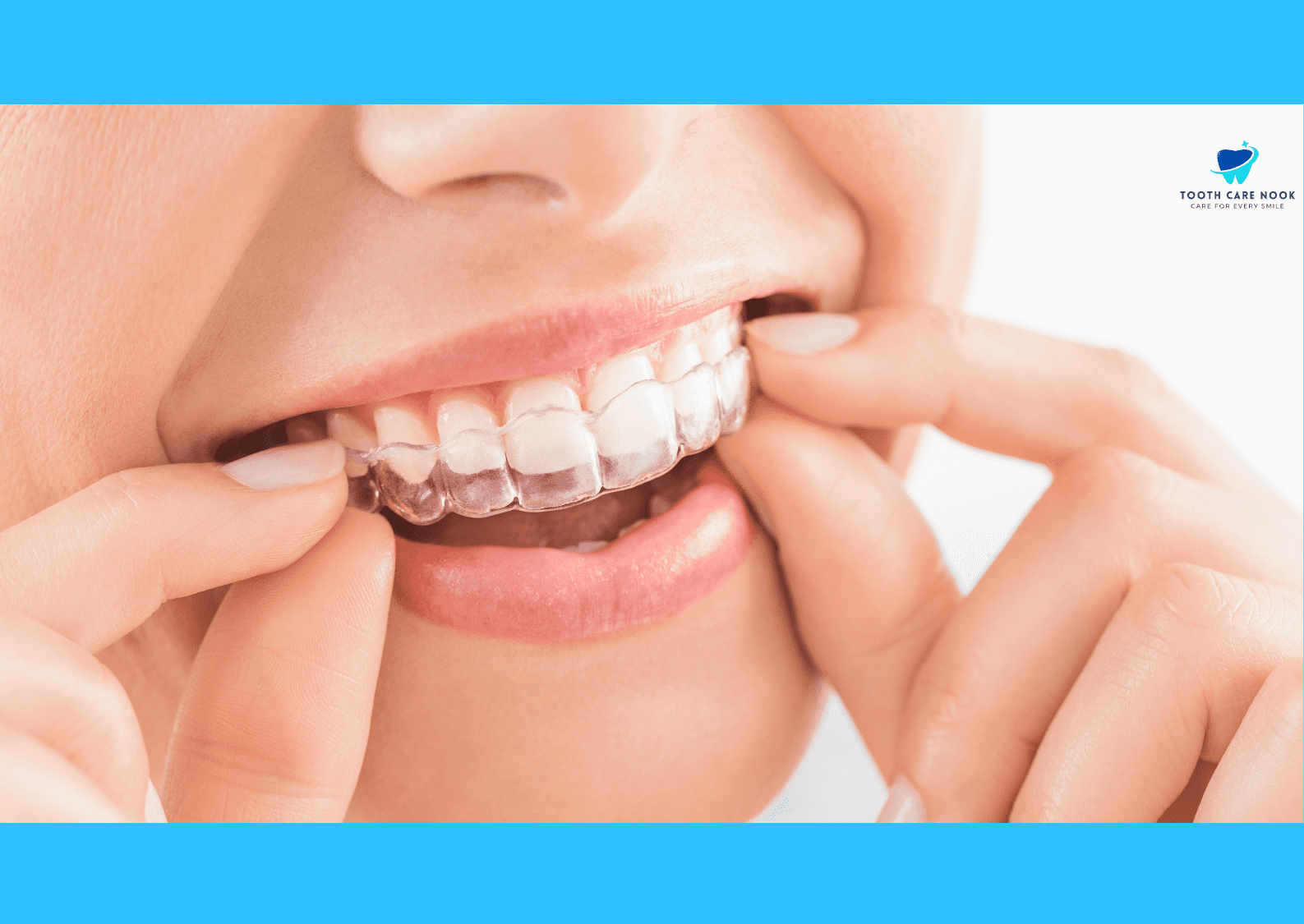
Advantages of Composite Bonding After Braces
Here are the advantages of composite bonding after braces:
- Composite bonding allows for the cosmetic enhancement of teeth following orthodontics.
- Braces may sometimes cause minor enamel damage or discoloration during treatment. Composite bonding can effectively repair such damage which restores the natural appearance and strength of the teeth.
- The materials come in various shades and can be custom-matched to blend seamlessly with the natural color of the teeth.
- It is a minimally invasive procedure that preserves more natural tooth structure compared to other restorative options, such as dental crowns or veneers.
- Composite bonding after braces is relatively quick and convenient which makes it an attractive option for patients seeking immediate results without lengthy treatment sessions.
- It provides an affordable option for patients looking to enhance their smile without breaking the bank.
FAQs
What Stage of Braces Are Bonding?
Bonding for braces is step 2 in the braces process for your teeth. Before attaching the braces, spacers will be placed between teeth to create small gaps. Once the spacers are removed, the orthodontist carefully places and cements the brackets onto each tooth’s front surface.
Is Bonding Braces Painful?
No, braces bonding isn’t painful. While the process may involve some pressure or discomfort as the brackets are attached to the teeth which is generally not considered painful.
Can You Eat With Bonded Teeth?
Yes, you can eat with bonded teeth. Once the braces are bonded to your teeth, you can continue to eat a variety of foods. However, it’s important to be mindful of what you eat to avoid damaging the braces or causing discomfort.
Some foods that are hard, sticky, or chewy should be avoided or eaten with caution to prevent brackets from loosening or wires from bending. Also, it’s a must to maintain good oral hygiene by brushing and flossing regularly to prevent food particles from getting trapped around the bonded brackets.
Is Bonding Bad for Teeth?
Bonding is not inherently bad for teeth. Dental bonding is a simple procedure. It is a safe and effective way to enhance the appearance and function of teeth.
Do Orthodontists Do Bonding?
Yes, orthodontists do perform bonding with their specialized training and expertise in tooth movement and alignment. They are well-equipped to perform their procedures as part of comprehensive orthodontics.

